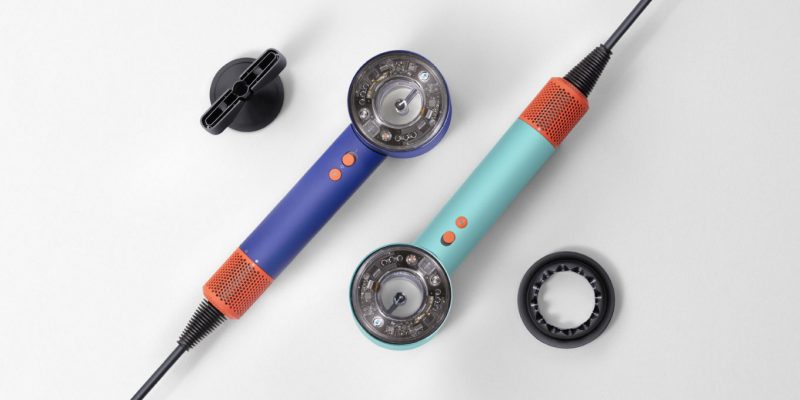Hair-care tips
Protect your hair against styling abuse and moisture imbalance with this expert advice.
• Diffuser
Risks "We call this ‘the no-touchy-touchy tool,’" says Toronto stylist Greg May of Greg May Hair Architects. Used properly, a diffuser isn’t that structurally damaging to curly hair, as long as you use it on low heat and avoid manipulating your hair too much.
Moisture guard Before you diffuse, apply a leave-in conditioning mousse or curl-defining cream to wet the hair. (Don’t comb it through.) For the least amount of frizz: flip your head over and towel-blot the hair, cupping your hand in the towel and squeezing out excess moisture. Then diffuse. If the damage has already been done, a strengthening or moisturizing conditioner will help.
• Blow-dryer
Risks Always use the nozzle on your blow-dryer, says May. It directs the heat and prevents damage caused by whipping the hair around. May also recommends investing in a ceramic blow-dryer. Ceramic ionic blow-dryers — and don’t be fooled by those ceramic-coated models — neutralize the charge of the hair, decreasing static and fly-aways. "They’re a lot healthier for your hair, less structurally damaging and they speed up drying like you would not believe!" adds May.
Moisture guard For a tousled look with some volume, mix your volumizing mousse or gel with a silicone anti-frizz product. Point the nozzle down the hair shaft. (Pointing against it flares open the cuticles, making hair look rough.) Finish with a cold blast of air to set the hair and make it look shiny.
• Curling iron
Risks "These days, I find that people are doing more damage with curling irons than with straightening irons," says May. "They leave them in too long because they want that nice, crisp ‘wedding’ curl."
Moisture guard Buy a professional-grade ceramic iron. Before you curl, use an anti-humectant hair spray or "bodifying" mousse to ward off frizz. Curling irons reach much higher temperatures than blow-dryers, so avoid the hottest setting. To repair damage, use a smoothing silicone product or a reconstructive treatment high in amino acids. And never run a curling iron down damp hair. It boils away the hair’s moisture content.
• Straightening iron
Risks "Too many women rub their hair aggressively with their hands when blow-drying," says May. "Then they take big chunks of hair and try to flatiron it, and they wonder why it doesn’t come out as smooth and shiny as a salon job."
Moisture guard Apply a heat protectant mist to well-conditioned, freshly washed curls. Blow-dry the hair (nozzle on), aiming it down the hair shaft as you straighten with a flat or round brush. Apply a silicone
anti-frizz product to dry hair. Work with a ceramic flatiron to reduce snagging and static, and never use an iron on damp hair. Don’t leave the iron on the same spot for more than a few seconds, and keep the iron moving down the hair shaft, as needed (usually one or two strokes). If the damage is done, invest in a weekly leave-in conditioning therapy packed with nourishing proteins.
• Colouring
Risks "Ammonia is the bad word in colour right now because it blasts the cuticle open to get the colour inside the hair," says May. "Now we know that you don’t have to open up the cuticle as much to change the colour, and the hair seals up better, leaving it smoother looking."
Moisture guard Use shampoos, conditioners and reconstructive treatments specifically formulated for colour-treated hair to extend the life of your shade and to maintain moisture. Daily moisturizing (and colour-specific) shampoos and conditioners are recommended, as well as a potent after-colorant conditioning treatment once a week.
Beat salt and chlorine damage. Find out how on the next page …
We’ve solved 5 of the biggest hair myths

• Perming
Risks A perm is a strong chemical process that lifts and separates the cuticle scales, often stripping them off entirely to reveal the inner cortex of the hair.
Moisture guard May recommends that you wash your hair every other day, use a light conditioner each time you wash, to help prevent breakage, and use a reconstructive treatment once a week.
• Relaxer
Risks "There’s a huge risk of moisture loss with relaxers," says May. The two most popular types are chemical relaxers and thermal reconstructive treatments, favoured by women in Asia who want super-straight hair.
Moisture solution "We usually follow a chemical-relaxer treatment with a strengthening conditioner to put the protein back in the hair," says May.
• Sun
Risks "I tell my clients who are going down south, ‘When you’re on the beach, use a reconstructive treatment and leave it in while you’re in the sun.’ It protects coloured hair from fading and dehydration. And if you don’t like the look of slick hair, buy a big hat!"
Moisture guard Regardless of whether you colour your hair or not, May recommends combing in a colour-care conditioner for added UV protection and moisture. When you get back to your hotel, wash your hair again and add more conditioner.
• Salt water
Risks Salt minerals stick to the hair causing severe dehydration and fading, and they often alter your hair colour.
Moisture solution Sport a leave-in conditioner, but as soon as you’ve finished swimming in the ocean, rinse your hair immediately and reapply a conditioning treatment.
• Chlorine
Risks If you have highlights and swim in a chlorinated pool, your hair may turn green as the chemical oxidizes.
Moisture guard Use a clarifying shampoo once a week, but no more than that. Follow up with a conditioner for colour-treated hair.
Read more
How to get sleek, straight hair
Newsletter
Join our mailing list for the latest and biggest in fashion trends, beauty, culture and celebrity.
Read Next

Fashion
H&M's Latest Designer Collab With Rokh Just Dropped (And It's So Good)
We chatted with the emerging designer about the collaboration, his favourite pieces and more.
by : Melissa Fejtek- Apr 18th, 2024

Culture
5 Toronto Restaurants to Celebrate Mother’s Day
Treat your mom right with a meal at any of these amazing restaurants.
by : Rebecca Gao- Apr 18th, 2024

Culture
Discover Club Med’s Stunning Exclusive Collection
Vacation destinations that bring pure luxury and comfort.
by : ELLE Canada- Apr 8th, 2024





